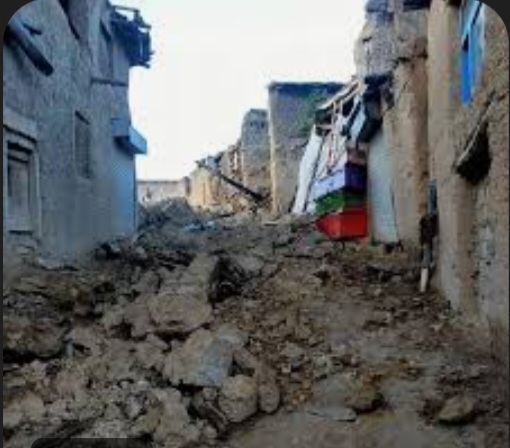
Esther Imonmion
A powerful earthquake shook eastern Afghanistan late Sunday night, killing more than 600 people and injuring hundreds more, as entire villages were reduced to rubble in some of the country’s most remote and vulnerable regions.
The 6.0-magnitude quake struck just 27 kilometers from the provincial capital of Jalalabad, rattling towns across Nangarhar and neighboring Kunar provinces. Dozens of villages collapsed within seconds, trapping families beneath layers of debris. Survivors, overwhelmed and under-equipped, began frantically digging through the ruins with their hands, desperate to reach those buried alive.
“Children are under the rubble. The elderly are under the rubble. Young people are under the rubble,” said a grief-stricken resident of Nurgal district, one of the hardest-hit areas in Kunar. He declined to give his name but issued a plea that echoed across the mountains: “We need help. We need people to come here and join us. Let us pull out the people who are buried. There is no one to remove the dead.”
Afghanistan’s eastern region, known for its rugged terrain and isolated communities, has long struggled with underdevelopment and fragile infrastructure. Homes in these areas are typically made of mud bricks, wood, or poorly reinforced concrete — materials ill-suited to withstand seismic tremors.
The full scale of the destruction remains unclear. Officials say many affected areas have yet to report casualty figures, and communications have been severely hampered. Public health authorities warned that the death toll is expected to rise as search efforts expand.
“We are using all available resources to save lives,” said Taliban government spokesman Zabihullah Mujahid, adding that rescue teams from Kabul, Nangarhar, and Kunar had been deployed. Despite these efforts, the enormity of the disaster is testing the capacity of an already strained emergency system.
This latest quake comes less than two years after a devastating 6.3-magnitude earthquake in western Afghanistan killed at least 1,500 people in October 2023 — one of the deadliest disasters in the country’s recent history.
Aid groups and international organizations have called for urgent humanitarian assistance as Afghanistan, still reeling from conflict, economic collapse, and extreme poverty, braces for another prolonged recovery.
In villages now turned to dust, families huddle around makeshift fires, mourning their loved ones while holding onto hope that others might still be found alive beneath the rubble.
